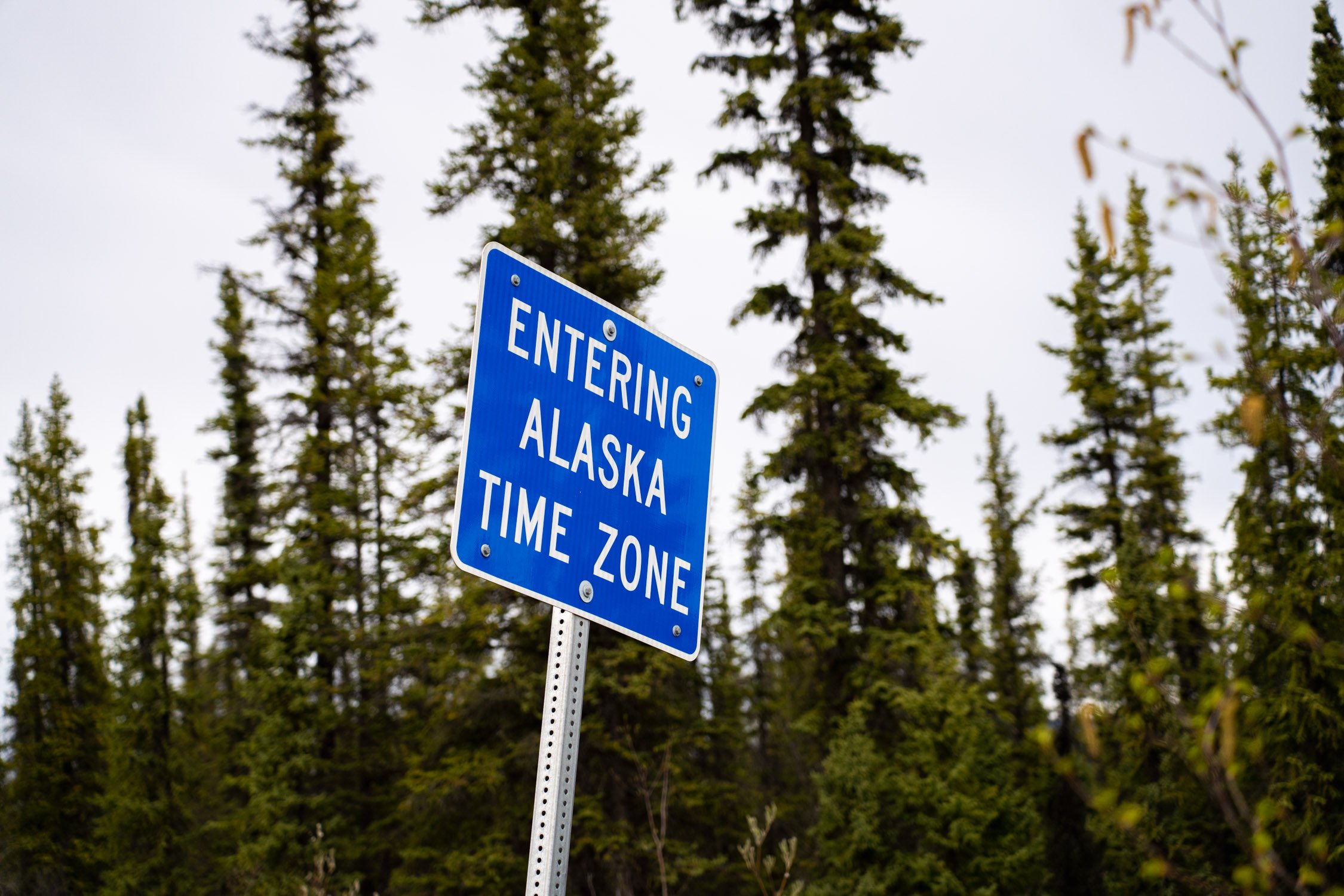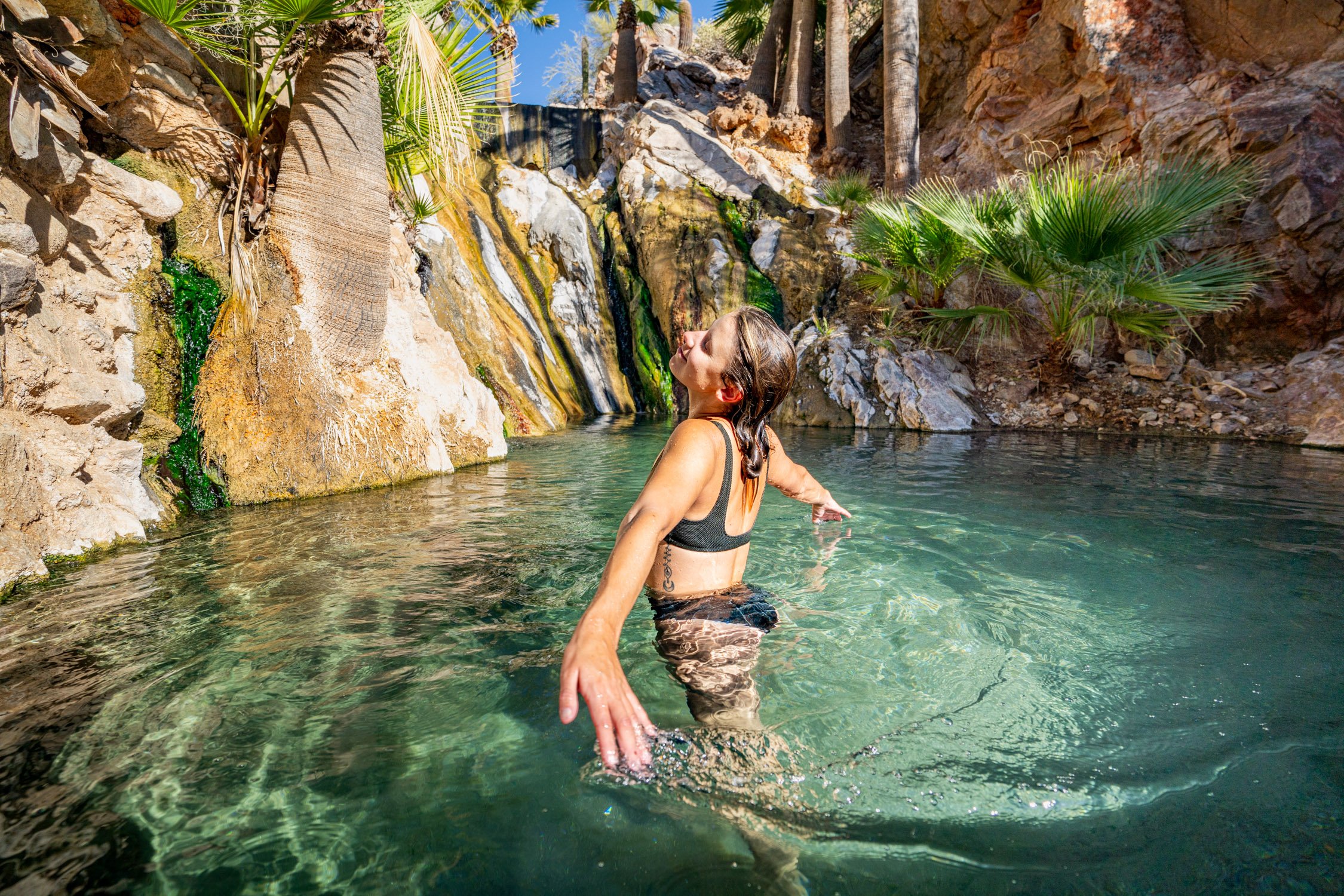Everything You Need to Know to Successfully Road Trip to Alaska
A road trip to Alaska is a thrilling adventure that promises breathtaking landscapes, diverse wildlife, and a sense of exploration like no other. But, before you hit the open road, it's essential to arm yourself with the right information to ensure a successful and enjoyable journey because this road trip is long and challenging. In this comprehensive guide, we'll cover everything you need to know to make your road trip to Alaska a memorable experience.
Snapping the mandatory image with my Dad stating to the world, “We drove to Alaska”. Photo by Dalton Johnson
Can You Road Trip to Alaska?
Yes, you can! While Alaska may seem like a distant and remote destination, the road trip is entirely feasible, and it offers a unique opportunity to witness the beauty of the North American wilderness. The journey involves crossing into Canada, most commonly done near Vancouver and heading north along the Sea to Sky highway in British Columbia, then continuing your drive north until you reach the the iconic Alaska Highway, which connects the lower 48 states to the Last Frontier. This legendary highway stretches over 1,390 miles and winds its way through Canada, providing an awe-inspiring route to Alaska.
One important fact to note, the Alaskan Highway is only a portion of the overall drive to Alaska, so here are two example trips and distances:
Total Journey Seattle, WA to Anchorage, AK: 2,264 miles
Total Journey Bozeman, MT to Anchorage, AK: 2,591 miles
What Documents Are Needed?
Before beginning on your Alaskan road trip, make sure you have all the necessary documents in order. This includes a valid driver's license, vehicle registration, and proof of insurance. Also, a passport is required to enter Canada.
For international travelers, check the specific entry requirements for each country you'll be passing through. Having the appropriate documentation ensures a smooth border crossing and a hassle-free journey.
How Long Is the Trip, Distance, and Time?
The distance and duration of your road trip to Alaska depend on your starting point and chosen route. If you're departing from the West Coast, such as Seattle, the journey can take around 5 to 7 days, driving 10 hours a day, but 12 to 15 is best for making stops along the way. The iconic Alaska Highway, which is only a portion of the drive, covers approximately 1,390 miles, and additional side trips and detours can extend the overall distance. Most trips from the Western US to Anchorage, AK will total 2,500 miles.
Keep in mind that the duration can vary based on your pace, stops, and the weather conditions. It's advisable to plan for a flexible itinerary to accommodate unexpected delays or detours.
When to Road Trip to Alaska:
Choosing the right time for your Alaskan road trip is crucial to ensure a safe and enjoyable journey, considering the unique weather patterns, road conditions, and the activities you wish to experience. While the beauty of Alaska can be appreciated year-round, different seasons offer distinct advantages and challenges:
1. Summer (Late May to Early September):
Pros: Summer is the most popular time for road tripping to Alaska, thanks to milder temperatures, extended daylight hours, and vibrant landscapes. The wildlife is active, and outdoor activities such as hiking, fishing, and wildlife viewing are at their peak.
Cons: This is the peak tourist season, resulting in crowded attractions and higher accommodation costs. Some remote areas may have road construction, and mosquitoes can be prevalent in certain regions.
2. Fall (Late September to Early October):
Pros: Fall brings a tapestry of colors as the foliage changes, creating a picturesque backdrop for your journey. The crowds diminish, providing a more peaceful experience. Wildlife remains active, and the aurora borealis (Northern Lights) may make an appearance as the nights grow longer.
Cons: Weather conditions become more unpredictable, and temperatures drop, especially in the later months. Some attractions and facilities may start closing for the winter season.
3. Spring (Late April to Early May):
Pros: Spring marks the awakening of nature, with blooming flowers and returning wildlife. The weather begins to warm up, and daylight hours increase, providing ample time for exploration.
Cons: Snow and ice may still linger in certain areas, and some attractions may not be fully operational. Road maintenance and construction can occur during this period.
4. Winter (Late October to Early April):
Pros: Winter in Alaska transforms the landscape into a winter wonderland, offering a unique and serene experience. If you enjoy winter sports such as skiing or snowmobiling, this season provides ample opportunities.
Cons: Harsh weather conditions, including freezing temperatures and snowstorms, make winter travel challenging. Many roads, attractions, and services may be closed or limited, and some areas may be inaccessible.
Tips for Choosing the Right Time of Year:
Flexibility is Key: Alaska's weather can be unpredictable, so having a flexible itinerary allows you to adapt to changing conditions.
Check Road Conditions: Before embarking on your journey, check road conditions and be aware of any closures or construction, particularly in the more remote stretches of the Alaska Highway.
Plan According to Activities: If specific activities, like bear viewing or fishing, are a priority, research the optimal times for those experiences.
Consider Shoulder Seasons: The transitional periods of late spring and early fall may offer a balance between favorable weather conditions and fewer crowds.
Getting Your Car Road Trip Ready:
Before setting out on the epic journey to Alaska, it's crucial to ensure that your vehicle is in top-notch condition. The remote stretches of the Alaska Highway can present challenges, so taking the time to prepare your car can make a significant difference in the success of your road trip.
Mechanical Check-Up:
Schedule a thorough inspection with a qualified mechanic. Check the engine, brakes, tires, and all fluid levels. Address any existing issues or potential concerns to avoid breakdowns on the road.
Tire Care:
Inspect the tire tread and sidewalls for wear and damage. Consider investing in a full-size spare tire, and make sure your jack and tire-changing tools are in good working order. I would even do a dry run on changing the tire so you know you can do it!
Fluids and Lubrication:
Ensure all fluids, including oil, transmission fluid, brake fluid, and coolant, are at the recommended levels. Consider an oil change if you're due for one, there are not many services along the trip.
Battery Check:
Inspect the battery for corrosion and ensure it's securely mounted. If your battery is old, consider replacing it before the trip to prevent unexpected breakdowns.
Brake Inspection:
Check the brake pads and discs for wear. If they are nearing the end of their life, replace them to ensure optimal braking performance during the long journey.
Lights and Electrical System:
Test all lights, including headlights, brake lights, and turn signals. Ensure that the electrical system is functioning correctly, and replace any faulty bulbs.
Cooling System:
Check the radiator and cooling system for leaks or issues. Ensure the radiator is filled with the appropriate coolant mixture to prevent overheating.
Emergency Kit:
Pack a comprehensive emergency kit that includes a first aid kit, flashlight, jumper cables, basic tools, and essential supplies. Consider carrying extra blankets, water, and non-perishable snacks.
Fuel System:
Ensure the fuel system is clean and functioning correctly. If you plan to travel through remote areas, carry extra fuel containers in case of limited gas stations.
Navigation and Communication:
Update your GPS system or maps, and ensure your mobile phone is in good working order. Consider a satellite phone or communication device for areas with limited cell coverage.
Boya Lakes, a stunning stop along the Cassiar Highway, see from the sky. Photo by Dalton Johnson
10 Must-See Places to Stop:
1) Sea to Sky Highway:
Starting your journey from the vibrant city of Vancouver, the Sea to Sky Highway takes you on a visually stunning drive through some of British Columbia's most breathtaking landscapes.
2) Salmon Glacier and Bear Viewing in Hyder, Alaska:
As you venture towards Hyder, Alaska, prepare to be awestruck by the grandeur of the Salmon Glacier. Nestled in the rugged wilderness, this expansive glacier offers a mesmerizing spectacle. Additionally, Hyder provides unique opportunities for bear viewing, allowing you to witness these majestic creatures in their natural habitat.
3) Kluane National Park, Yukon, Canada:
Explore the untamed beauty of Kluane National Park, home to Canada's highest peak, Mount Logan. Whether you're an avid hiker seeking challenging trails or a wildlife enthusiast eager for captivating sightings, Kluane National Park is a must-visit destination along your journey.
4) Dawson City, Yukon, Canada:
Step back in time as you immerse yourself in the fascinating history of the Klondike Gold Rush in Dawson City. This charming town preserves its heritage with historic buildings, lively streets, and a unique aura that transports you to the gold rush era.
5) Tok, Alaska:
Known as the 'Gateway to Alaska,' Tok extends a warm welcome with its friendly atmosphere and picturesque surroundings. Take a moment to absorb the Alaska Highway's significance as you continue your road trip towards the Last Frontier.
6) Denali National Park and Preserve, Alaska:
Encounter the awe-inspiring majesty of North America's highest peak, Denali, as you enter Denali National Park and Preserve. The park's vast wilderness provides an ideal setting for wildlife sightings, with grizzly bears, caribou, and moose among the charismatic inhabitants.
7) Matanuska Glacier, Alaska:
Along the Glenn Highway, be captivated by the sight of the Matanuska Glacier. This accessible glacier offers more than just a stunning view; it provides opportunities for guided hikes, allowing you to explore the icy terrain up close.
8) Kenai Fjords National Park, Alaska:
Embark on a mesmerizing cruise through the icy fjords of Kenai Fjords National Park. Witness the dramatic calving of glaciers and marvel at the diverse marine wildlife that inhabits the coastal paradise, creating an unforgettable experience.
9) Homer, Alaska:
Discover the charm of Homer, Alaska, a coastal town with unparalleled views of the Kachemak Bay. Head down to the spit (if you can see this area from the sky, it actually looks like someone spit) and engage in fishing adventures--like halibut or salmon--, explore wildlife excursions, and soak in the unique coastal atmosphere that defines this Alaskan gem. There are plenty of water taxi's you can take as well, to explore the bay. I have had a great experience with Mako's Water Taxi.
10) Boya Lakes, British Columbia:
Adding an extra touch of natural beauty, Boya Lakes in British Columbia offers a serene stop along your journey. The crystal-clear lakes surrounded by pristine wilderness provide a tranquil setting for a peaceful break, making it an ideal spot to connect with nature on your road trip.
Route Options:
Several routes lead to Alaska, but the most iconic is the Alaska Highway (Alcan Highway). Alternative routes include the Cassiar Highway, which offers a more remote and scenic path, and the Top of the World Highway, which provides unparalleled views but may have unpaved sections.
Consider your preferences, the time available, and the type of adventure you seek when choosing your route. Each option presents its own set of attractions and challenges, ensuring a memorable journey regardless of the path you take.
One of the many long roads leading towards the mountains while road tripping to Alaska. Photo by Dalton Johnson
A road trip to Alaska is a bucket-list adventure that promises unparalleled beauty and unforgettable experiences. By preparing thoroughly, understanding the required documents, planning your route, and highlighting must-see stops, you'll be well-equipped to navigate the open road and create lasting memories on your journey to the Last Frontier. So, pack your bags, fuel up your vehicle, and get ready for an epic road trip to Alaska!









